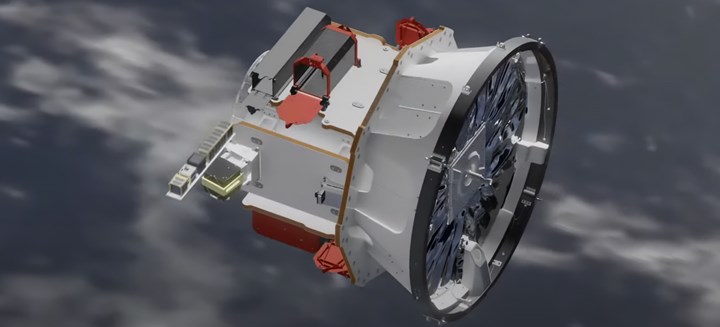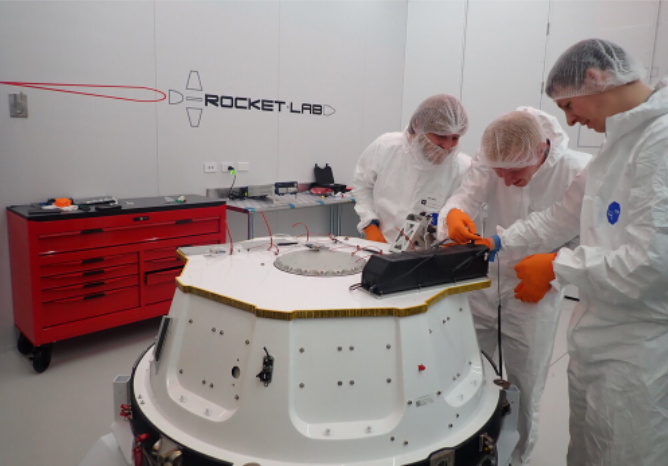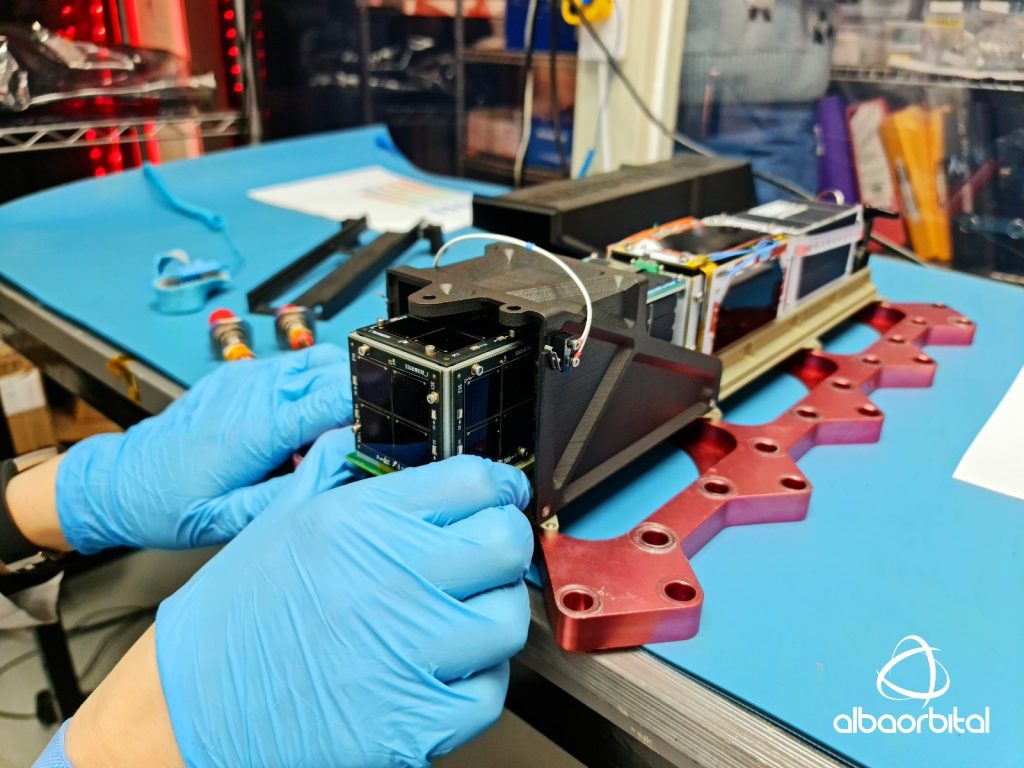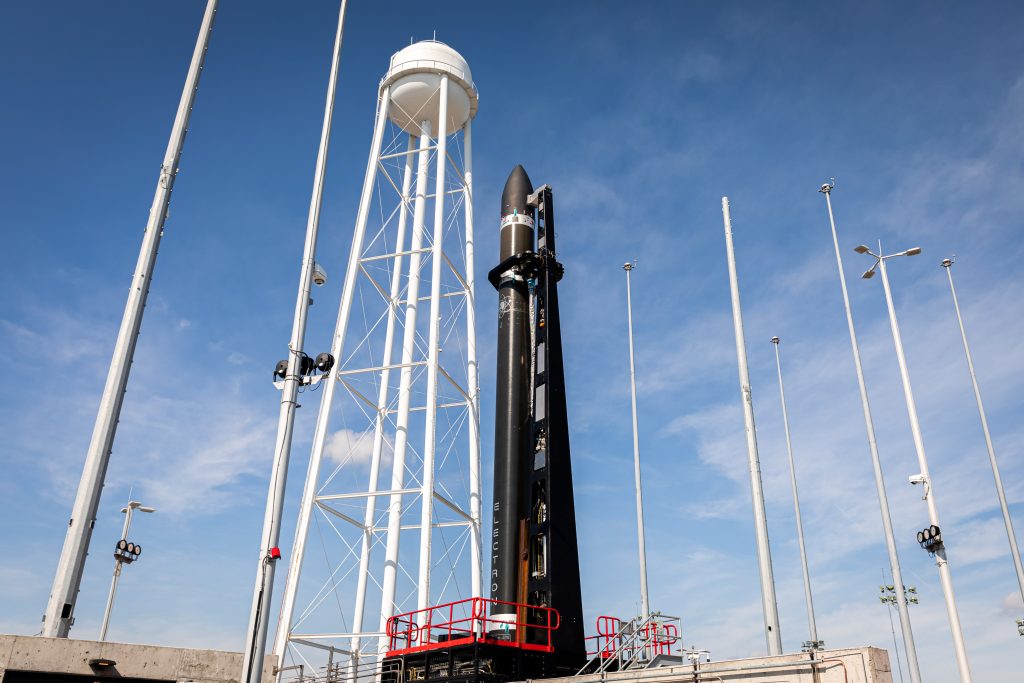17 May 2022 Alba Orbital, the Scottish manufacturer of PocketQube satellites, at3D printingsuccessfully completed its second launch mission in 2022.

This time, the Electron rocket from Rocket Lab was used to carry the satellite. ALBA launched four PocketQube small satellites (model: Alba Cluster X) from Rocket Lab’s Launch One Building on Mahia Peninsula, New Zealand. It is understood that the project is called “There And Back Again” and involves a total of 34 satellites being sent into sun-synchronous orbits in the future.

Alba used a fully 3D printed AlbaPod v2 satellite deployer, and in order to better distribute the four satellites, they used Windform XT 2.0 carbon fiber reinforced composite material produced by CRP Technology for reinforcement work.
“We are delighted to be a partner of Alba Orbital again,” said Peter Beck, founder and CEO of Rocket Lab. “The Alba Orbital team has demonstrated that incredibly small satellites can be very powerful at a fraction of the cost of traditional satellites, yet perform exactly the same function. This innovation makes exploring space faster, easier, More affordable. So we’re excited to make that possible with Electron.”

Windform XT 2.0 and AlbaPod v2
Windform XT 2.0 is suitable for the laser powder bed fusion process, and the material is part of CRP Technology’s Windform TOP-LINE family of composite materials. It is based on the original Windform XT product, but with improved mechanical properties such as 8% higher tensile strength and 46% higher elongation at break.
The material is suitable for 3D printing durable prototypes as well as functional end-use parts. CRP Technology has rated this material as “HB” according to the UL 94 flammability test, which means it provides many high temperature
aviation
aerospace
Heat resistance and flame retardant properties are required for applications, which include proximity to components such as thrusters and boosters and open flames.

In 2020, Alba Orbital began experimenting with Windform XT 2.0 composites for the 3D printing of the company’s space satellite AlbaPod v2 deployer. Because of the material’s outstanding mechanical and thermal properties, the deployer’s housing, ejection mechanism, door assembly, and other components have been redesigned using 3D printing.
Earlier, the company completed the integration of nine PocketQube satellites into the AlbaPod v2 deployer ahead of the launch of the Cluster 3 mission in December 2020.
In 2022, Alba will put five of its AlbaPods into orbit as part of SpaceX’s ride-hailing program. Thirteen PocketQube satellites are currently deployed in space for various research missions.
Other composites in the Windform family of materials include Windform RS and Windform SP, which Antarctic Bear learned have recently been used to 3D print track and field shoes, among others.

allow more people into space
Alba Cluster X includes Alba’s own Unicorn-2 satellite platform, and the other three are Alba’s customer ACME AtronOmatic (weather application developer). Currently, each of the four satellites is deployed in orbit about 500 kilometers above the Earth’s surface.
Specifically, Unicorn-2 is equipped with an optical nighttime imaging system capable of monitoring light pollution levels around the world. These night light data are expected to provide insights into various human activities such as armed conflicts, disasters, urbanization, fishing,
energy
use and greenhouse gas emissions.
Additionally, Rocket Lab’s first attempt at capturing Electron launchers in mid-air using parachutes and helicopters. The company hopes to one day see them become the first, reusable launchers of small orbiting satellites.
“It is a pleasure to work with Rocket Lab again on this exciting mission,” said Tom Walkinshaw, CEO and founder of Alba Orbital. “We’re excited to launch our first satellite platform on an Electron rocket dedicated to imaging Earth at night. Since then, our mission has been to bring more people into space, and Rocket Lab has Prove that they share our vision.”
(responsible editor: admin)


0 Comments for “ALBA uses 3D printing technology to send POCKETQUBES satellites into space, achieving the same function while reducing costs”